Catalonia (Spain)
Over 2,500 years ago the Greeks planted the first vines in what is now known as Catalonia, and later the Romans expanded the local wine culture all across Catalonia and Hispania (the Roman name for the Iberian Peninsula). The regions of Priorat, Montsant, and Penedes all have long winemaking traditions and are known for producing high-quality wines.
This area guide will help you learn about some of the key wine regions of Catalonia, their geography, soil and especially their fantastic wines, a few of which you can enjoy as part of this month’s collection of wines (featured at bottom of this page and in the Wines page).
About Catalonia
Catalonia (Catalunya in the local Catalan) is a triangle-shaped Autonomous Community situated at the most northeastern corner of the Iberian Peninsula, bordering the Mediterranean Sea to the east and France to the north, with Spain to the west and south. Beautiful, vibrant, and cosmopolitan Barcelona is the region’s capital, and visiting the local wineries is a must if you happen to visit to this incredible city.
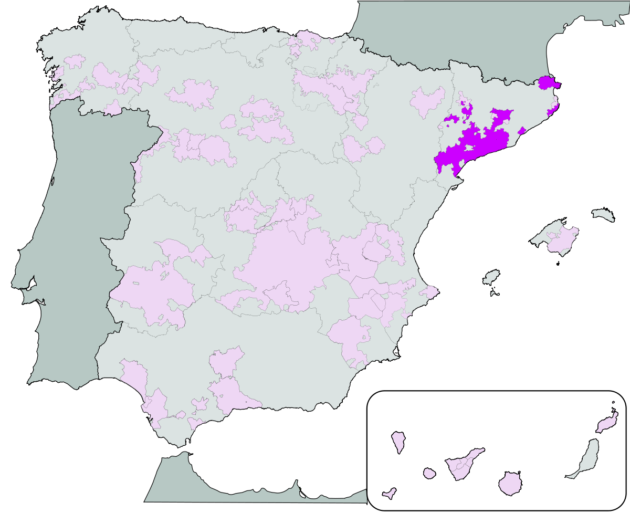
Wine map of Spain, highlighting Catalonia.
Catalonia’s rich wine history shines through today’s wines. Many local grapes are used, such as Monastrell and Xarel-lo, and vineyards planted more than 100 years ago still produce wine today! Catalonia also produces the most famous Spanish sparkling wine, Cava! Cava is made in the traditional method, like Champagne, but uses local white grape varieties instead.
Wine origin is very important in European countries, and Spain, like the other wine-producing countries, has developed a system of appellations of origin. Both Montsant and Penedes are registered as DOs or Denominations of Origin, while Priorat belongs to the highest quality category in Spanish wine, DOCa, or Quality Denomination of Origin.
Climate
Flanking the Mediterranean Sea, the climate of Catalonia is of course Mediterranean. This means that summers are hot, long, and dry. Winds are often strong, but beneficial for viticulture since they bring the cool sea breeze in over the mainland. Rain is scarce and falls mostly in the Winter and Spring months. Overall, the conditions are very well-suited to the production of high-quality wines, since they ensure healthy, ripe grapes are produced every year.
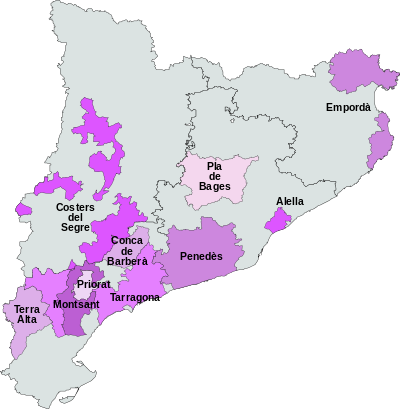
Catalonian wine regions
The most significant variation in the climate of Catalonia is altitude. Vineyards in the mountains, like those of Priorat, and to a lesser extent Montsant, experience cooler temperatures than those of Penedes. Still, temperatures in the region overall often reach the upper 30s (oC) in the Summer. But worry not, the local grapes used are accustomed to these hot and dry conditions, and in fact rely on them in order to realize their maximum potential!
Priorat
Priorat is located in the Southern part of Catalonia, close to the city of Tarragona. After a winding drive through the region’s coastal mountain ranges, you reach the DOCa around the village of Gratallops. The scenery is immediately striking, with steep slopes planted with vineyards and high peaks rising beyond. This sparsely populated area, with its many small villages and communes, produces one of the most important and highly regarded European wines.
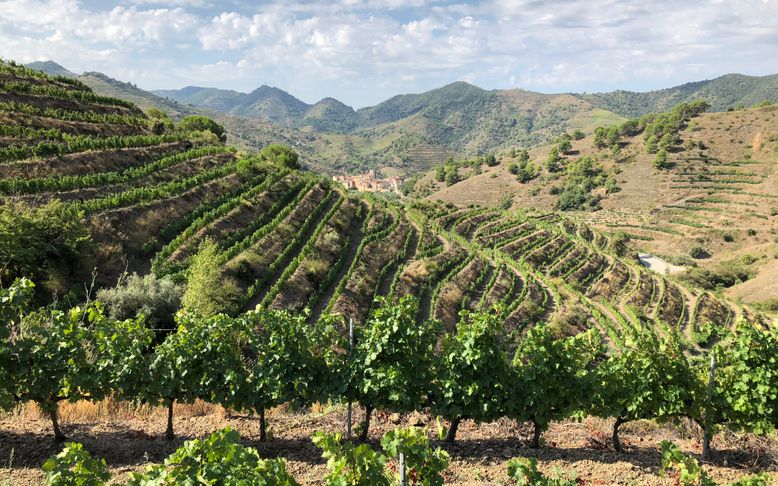
Priorat is one of the top two Spanish wine regions in terms of quality designation (the other being Rioja), and its wines are bestowed the classification DOCa (Denominación de Origen Calificada). Priorat has been an established DO (Denominación de Origen) since 1954, and the wines are mostly blends of Garnacha and Cariñena (Carignan in French).
Soil
Llicorella, consisting of reddish and black carboniferous slate with small particles of mica and quartzite that reflect and conserve the heat, is the predominant soil type of the region. It’s free draining, meaning most of the winter’s rainfall is not available for the vines during the growing season.
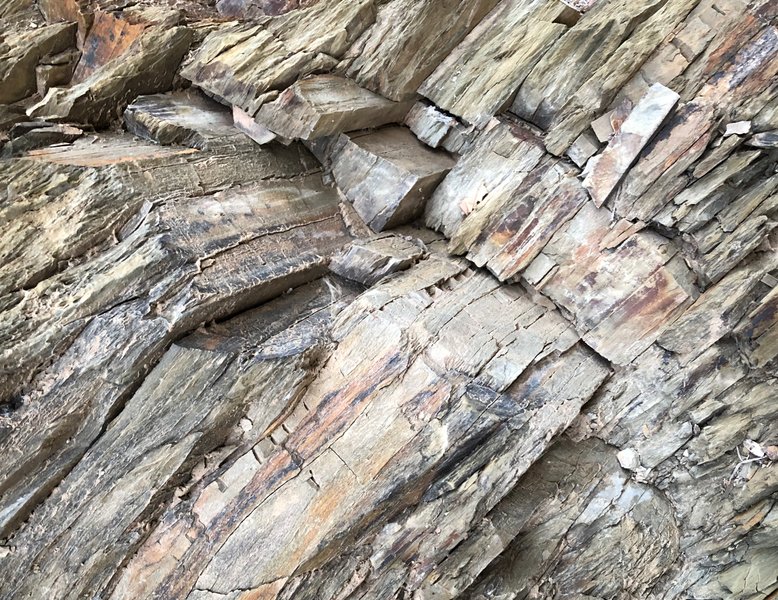
The vineyards are planted on steep slopes that face South, towards the sun, which helps ripen the grapes. The steep slopes of the region are dotted with vineyards and forests, creating an almost surreal setting.
The wines of Priorat
Soil plays a paramount role for the winemakers of Priorat. The poor fertility, combined with minimal rainfall and a warm climate, is what makes the wines of Priorat so unique. The winemakers use the Garnacha grape, called Grenache in France, which is well-accustomed to the climate and soil. It creates perfumed wines with intense strawberry notes and hints of Mediterranean herbs.
Priorat wines are usually blends of different grapes. Many grapes can be used, but Cariñena (Carignan in neighbouring France) is the most common. However, more and more winemakers are turning towards other classic varieties, such as Cabernet Sauvignon and Syrah. These French varieties are renowned around the world for their wines, and provide the Priorat blends with generous tannins and black fruit components.
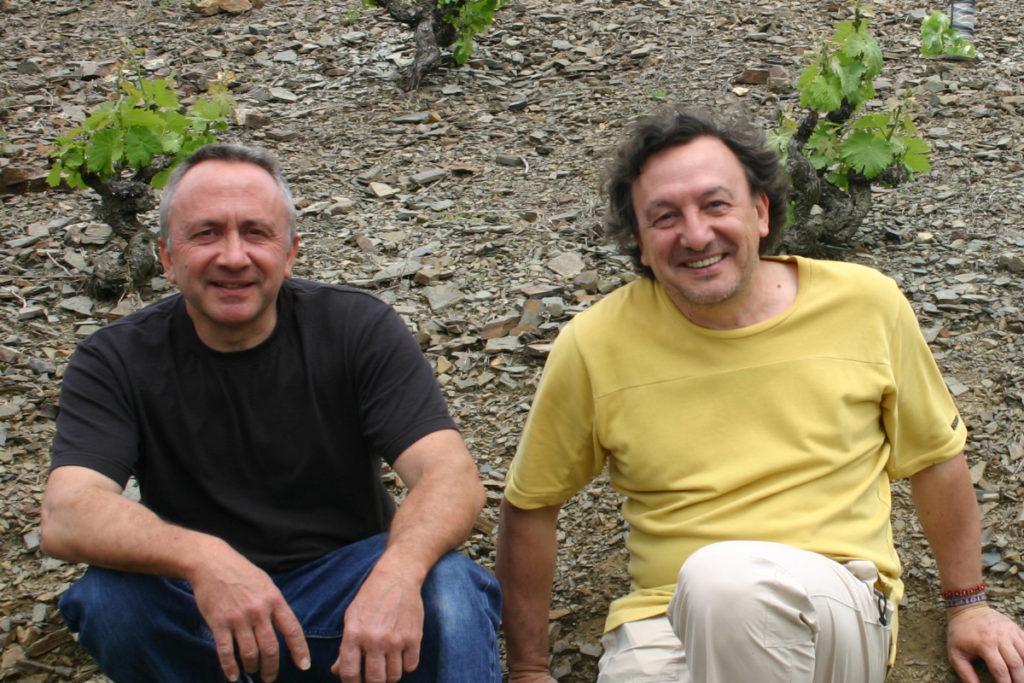
The influence of the winemaker in the wines of Priorat is equally as important as the terroir. The wines are intensely extracted to make sure the aromas are powerful. However, this also extracts tannins, so oak maturation is employed to soften the tannins. Both French and American oak is used (these are different oak tree species), and not only do they make the wines easy to drink and velvety when they’re young, but they also impart special aromas to the wine, like vanilla, coconut, and cloves.
The power, refinement, and elegance of Priorat wines will make you an enthusiastic fan of this Catalonian wine region.
Montsant
Montsant almost completely encircles the Priorat area. It is often thought of as Priorat’s younger brother, having been established relatively recently, in 2001. Being so close, the differences between the two regions are small yet quite important.
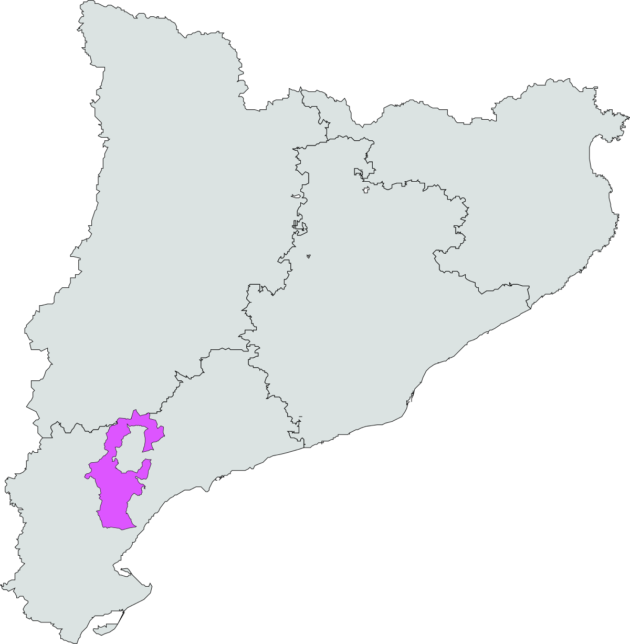
Both Garnacha and Cariñena are primarily used, but Tempranillo and other more well-known grapes like Cabernet Sauvignon, Merlot, and Syrah also comprise the local red wines.
Climate
The climate of Montsant is Mediterranean, like the rest of Catalonia. However, the vineyards are at lower altitudes than those of Priorat, and this makes the region a bit warmer overall. What’s more, many vineyards are planted on the valley floor, so they have less sun exposure compared to those on the Southern-facing slopes of Priorat.
Soil
Just as in Priorat, the soil on the slopes retains little water or nutrients. Old vines (50 to 100 years old) can send their roots up to 20 metres deep into the rocks in search of moisture. These unique properties contribute to the quality of the wine. The wine is very concentrated, but the wine is expensive to produce and profits are low.
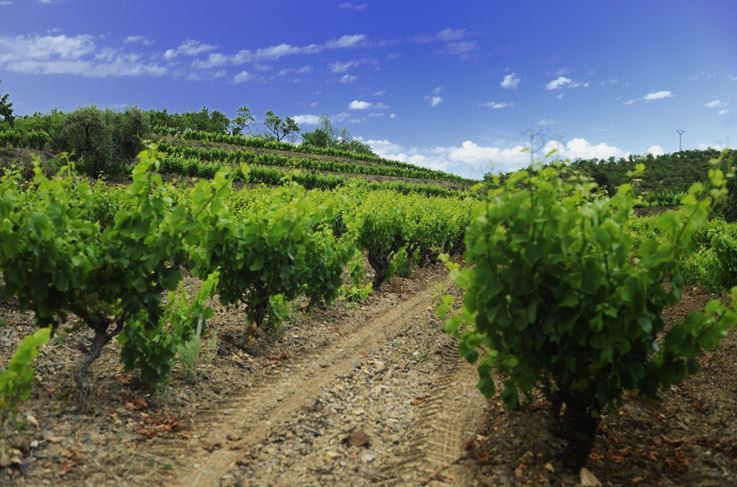
The area of Montsant however, is not as hilly as Priorat. While some vineyards are planted on slopes, most are planted on the valley floor. The soil there is richer than the Llicorella one finds at the higher elevations, with higher clay content. This means it can absorb more water and provide more nutrients to the plants. The wines made from grapes grown on the valley floor are not as concentrated as the ones from the hills, but generally are more easy drinking and can be enjoyed while young.
The wines of Montsant
Montsant is a red wine region. About 95% of the 1,900 hectares under vine are planted to red varieties: about 35% of acreage is planted to Garnatxa (Grenache), roughly 30% Cariñena (Carignan), followed by classic Bordeaux varieties like Cabernet Sauvignon and Merlot, as well as other grapes like Syrah. Grenache Blanc is the most planted white variety in the region (55%) followed by Macabeu (39%).
The red wines it makes are big and fruity, with a lot of strawberry and cherry aromas. Owing to the region’s climate and soil conditions, the wines don’t require long aging to become enjoyable! Garnacha from Montsant is soft on the palate with a mellow acidity, and shows its best self when served slightly chilled at between 12 and 15 o C.
In addition to single varietal Garnacha, many blends are made, often similar to those of Priorat. Cariñena, Cabernet Sauvignon, Syrah, and also Merlot are the main varieties used in the blends. Sometimes, producers also prefer to bottle these grapes on their own. Together these make Montsant a very diverse wine region, and very much worth exploring!
Penedes
Penedes is a large DO that covers a big part of Catalonia. It’s one of the most important wine-growing areas of Spain, and it’s located between the capital Barcelona and the smaller Tarragona. The rolling hills of Penedes are close to the sea, but the Ordal mountains act as a barrier from the Mediterranean. On the other side, the high peaks of the Montserrat mountains dominate the skyline.
Many different wine styles are produced in this area, including red, rosato, and white. However, sparkling Cava is undoubtedly the most important. The key grape varieties are again Garnacha and Cariñena for red and rose wines, while Parellada and Xarel-lo are used to produce white and sparkling wines.
Climate
The climate of Penedes is typical Mediterranean. However, the Ordal mountains block most of the strong winds and humidity from the sea from entering the valley. Both of these pose potential threats to viticulture. Strong winds can shear the young shoots, while high humidity makes more spraying necessary to produce healthy grapes. And today Penedes is one of the most important organic wine regions of Spain!
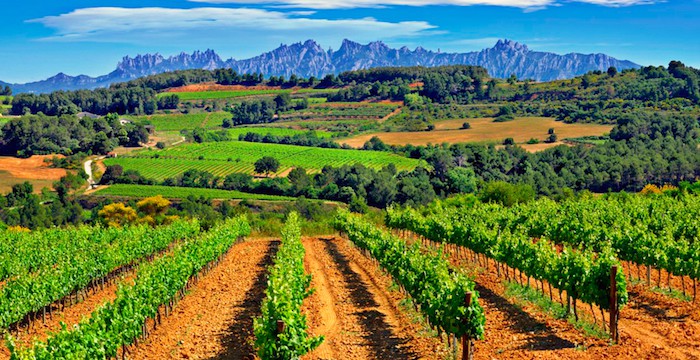
The different altitudes of the Penedes region give rise to a range of distinct microclimates. For this reason the region is divided among three sub-zones. Baix Penedes is close to the coast, the main valley is called Penedes Central, and finally, the higher elevations that are the furthest from the sea (and therefore the coolest), are called Alt Penedes.
Soil
Generally speaking, the soils are quaternary, calcareous and clayey. Poor they may be in organic matter, this is ideal winegrowing soil, because it produces lower-yielding vineyards and, as a result, higher-quality grapes. Combined with the meager Summer rainfall of the region and the warm climate, very little water is available to the grapevines, but, if anything, it seems that’s the way they like it.
The wines of Penedes
Penedes is a very diverse wine region, producing not only red but also rose, white and sparkling wines. The red wines are made from the regional grapes of Garnacha and Cariñena, but Tempranillo, Cabernet Sauvignon, Syrah, and Merlot are also used and are very successful in the region. Rose is produced from all these grapes, though Garnacha and Cariñena are preferred, as they produce fruity, flavor-rich, light-coloured roses.
The local white wine grapes of Macabeo, Xarel-lo, and Parellada, along with the cosmopolitan Chardonnay, dominate in both still and sparkling white wines. The high acidity of these grapes, uncharacteristic for such a warm climate, together with their unique aromas of peach, white flowers, and green herbs, make the wines of this region highly rated and eagerly sought after.
Cava
One of the best-known Spanish wines is Cava. While it’s permitted to make Cava in many Spanish regions, Penedes is considered to be the heart of its production. The village of Sant Sadurni d’Anoia in the centre of Penedes is home to big and small Cava producers, and the overall environment is reminiscent of Epernay in Champagne, with bubbles flowing all day long in the local restaurants and bars! (We have included a Cava in each wine set this month with the goal of transporting you to these festive Spanish villages!)
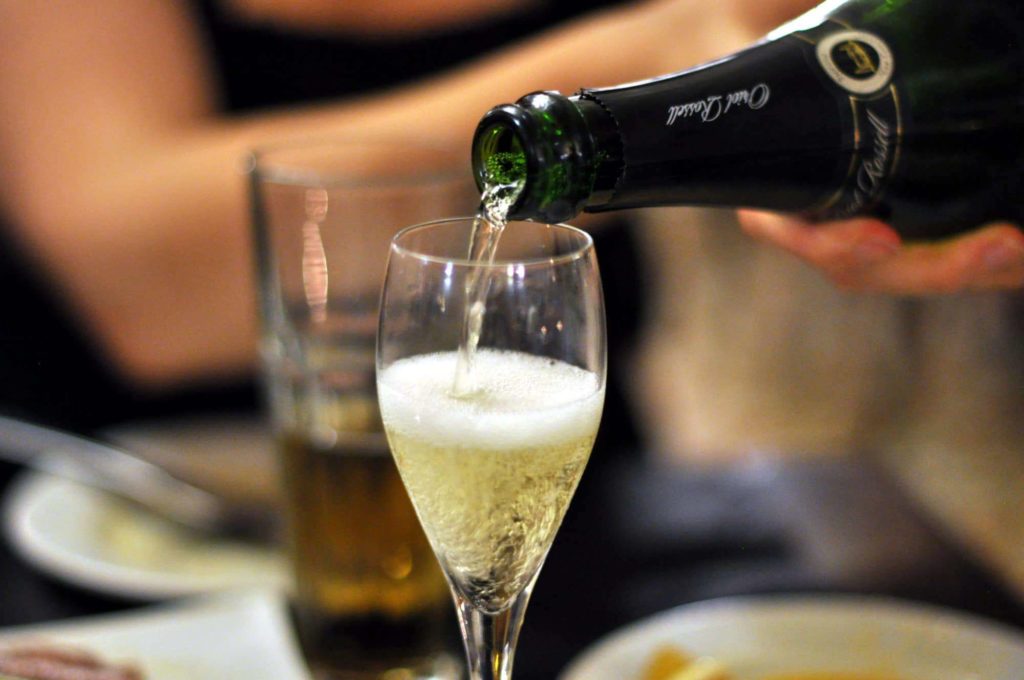
Cava wines are similar as well to Champagne in their method of production. First, a still white wine is made, and this is typically a blend of Macabeo, Xarel-lo, and Parellada (the traditional Cava varieties), though Chardonnay is increasingly used.
Next, the wine is bottled with a bit of extra sugar and yeast. This causes another, secondary fermentation to begin in the bottle. Fermentation produces carbon dioxide (CO2) in addition to alcohol, but this remains trapped in the bottle, and is forced to dissolve into the wine. Once we open the bottle, the beautiful bubbles are released slowly in the glass and then our mouths, giving the wine extra freshness and playfulness.
One type of Cava specific to Penedes is Corpinnat. Corpinnat is a label of excellence registered in 2017, whose name is composed of the word ‘cor’ (heart in Catalan), and ‘Pinnat’, which comes from the etymological root Pinnae, referring to the origin of the place name Penedès. This collective brand encompasses wineries in the heart of the Penedès, which make their wines from 100% organic grapes harvested by hand and vinified entirely on the property. This month’s Enthusiast and Aficionado sets each include a Corpinnat Cava from the distinguished producer Sabaté i Coca Mosset Brut Nature.
Food Pairings
Traditional Catalan cuisine is diverse, ranging from pork-intensive dishes in the inland part of the region to fish- and seafood-based recipes along the coast. Meat and seafood are often combined in the Catalan version of surf and turf, known as mar i muntanya. Examples include chicken with lobster (pollastre amb llagosta), chicken with crayfish (pollastre amb escarmalans), and rice with meat and seafood (arròs mar i muntanya).
The cuisine includes many preparations that mix sweet and savory and stews with sauces based upon botifarra (pork sausage) and the characteristic picada (ground almonds, hazelnuts, pine nuts, etc. sometimes with garlic, herbs, biscuits)
Botifarra with White Beans
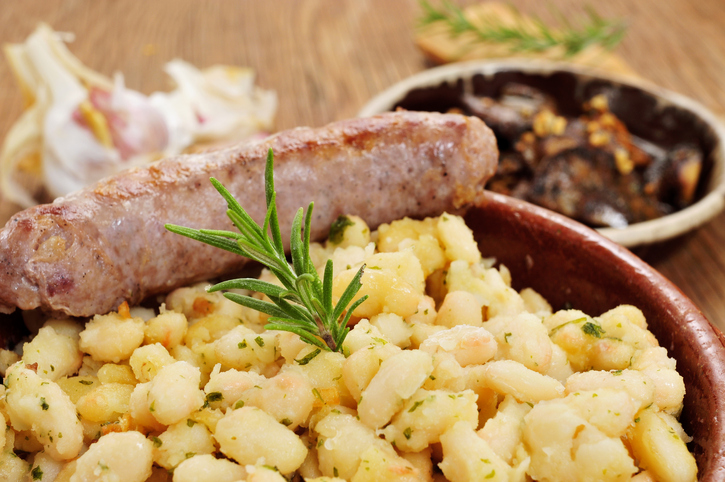
Beans with Botifarra (alternatively butifarra) is a typical and simple Catalonian dish, and the quality of its ingredients is what makes it so good. Some good beans cooked just right, like the ganxet which is a very fine and soft bean and is used for this dish, but other types of beans can be used as well.
Botifarra at its most basic is a Catalan pork sausage, but there are many varieties. Botifarra Catalana is a lean pork sausage that is pink in color, whereas Botifarra de Perol is made from head and shoulder meat and bacon, and may also include offal and blood. It has a strong taste and tends to have a fattier consistency than Botifarra Catalana.
Pair this with a full-bodied red wine such as any of those included in this month’s wine sets.
Fideuà
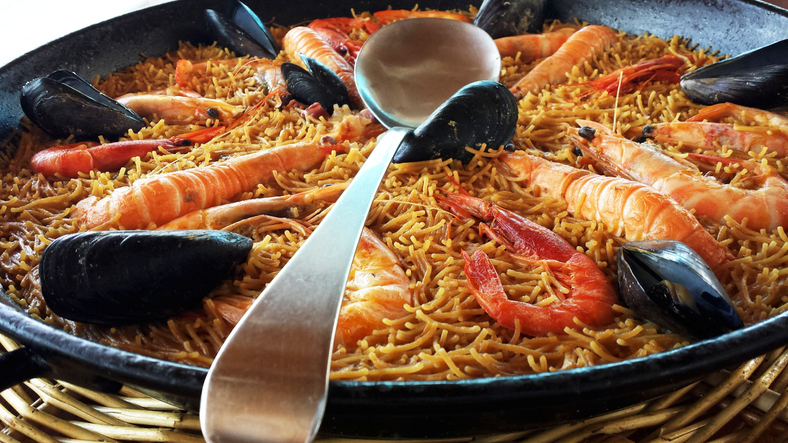
Fideuà is a local traditional dish made with short lengths of dry pasta called fideus. Instead of boiling the noodles Italian-style, the Catalan way is to cook them with a small amount of liquid in a wide cazuela or paella pan. First, the noodles are browned in olive oil, then simmered in a rich fish and shellfish broth. Like a cross between risotto and paella, it’s a dish for all lovers of Mediterranean fish soups in the bouillabaisse family. Broth is added at intervals as it is absorbed, and stirring is kept to a minimum. Allioli (the Spanish version of aioli) is added to each soup plate before serving.
Enjoy Fideuà with a rich Cava or—even better—a Corpinnat.
In Summary
The history of Catalonian wine is long and storied. Today it is home to one of Spain’s top wine regions, Priorat, as well as up-and-coming DOs such as Montsant and Empordà. The best sparkling wine the country has to offer comes from Penedes and continues to garner international attention and prestige. A wide diversity of grape varieties can be found here, both local, such as Garnacha and Macabeo, and international, including Syrah and Cabernet Sauvignon. They all seem to thrive in the unforgiving soil of the terroir and are capable of producing exceptional wines such as the red oak-aged wines of Priorat, and the more fruit-driven wines of Montsant. Enjoy them together with us this month!